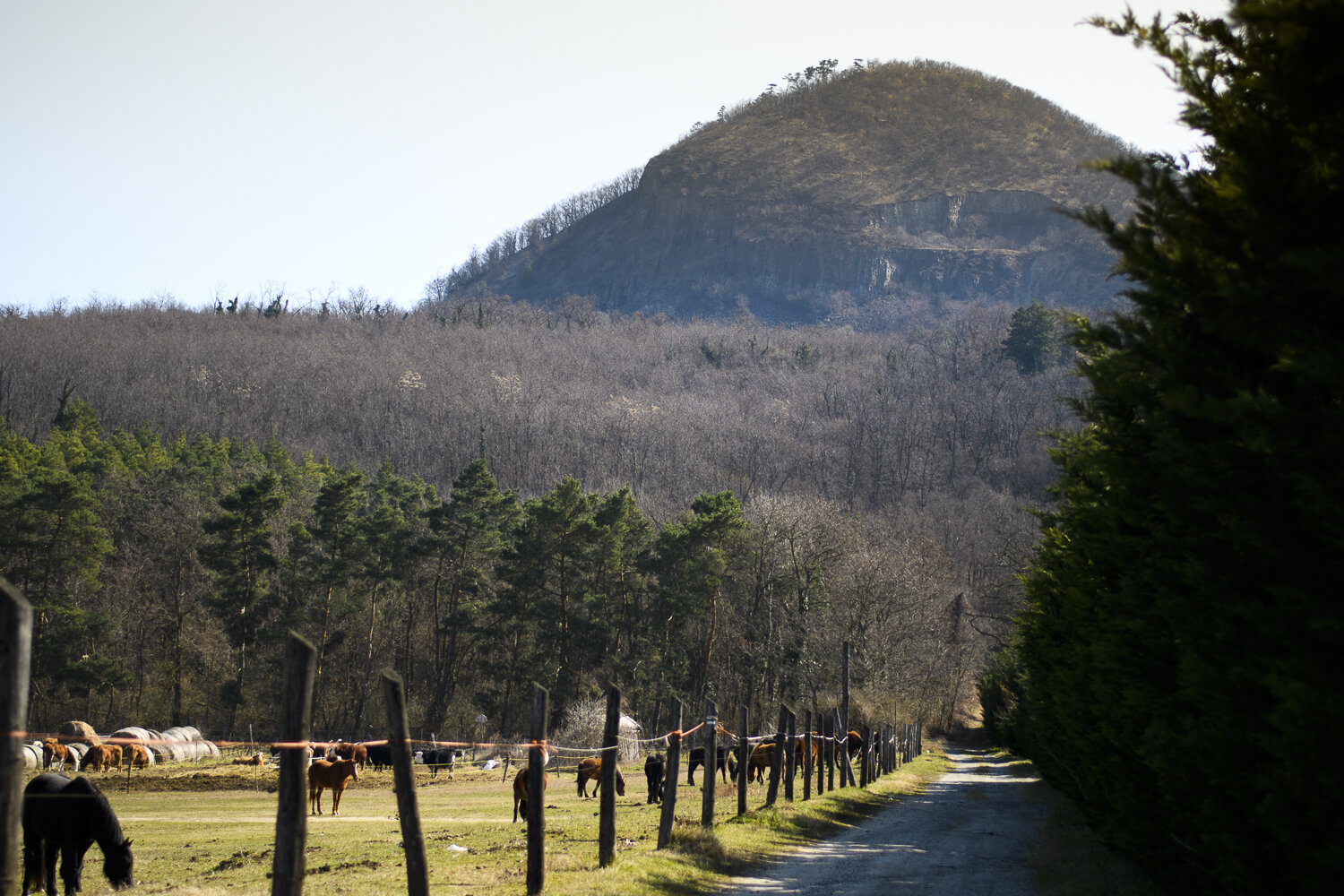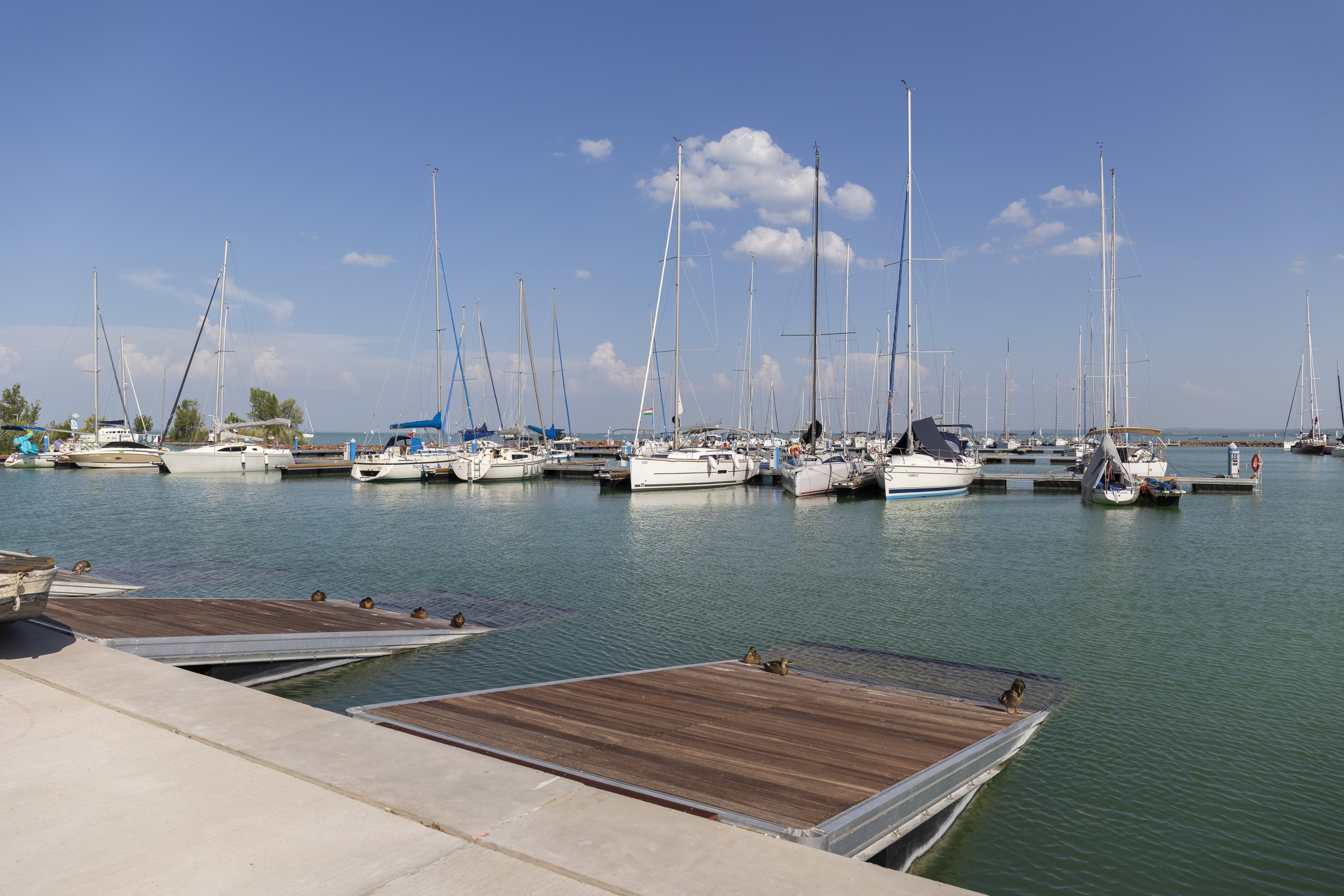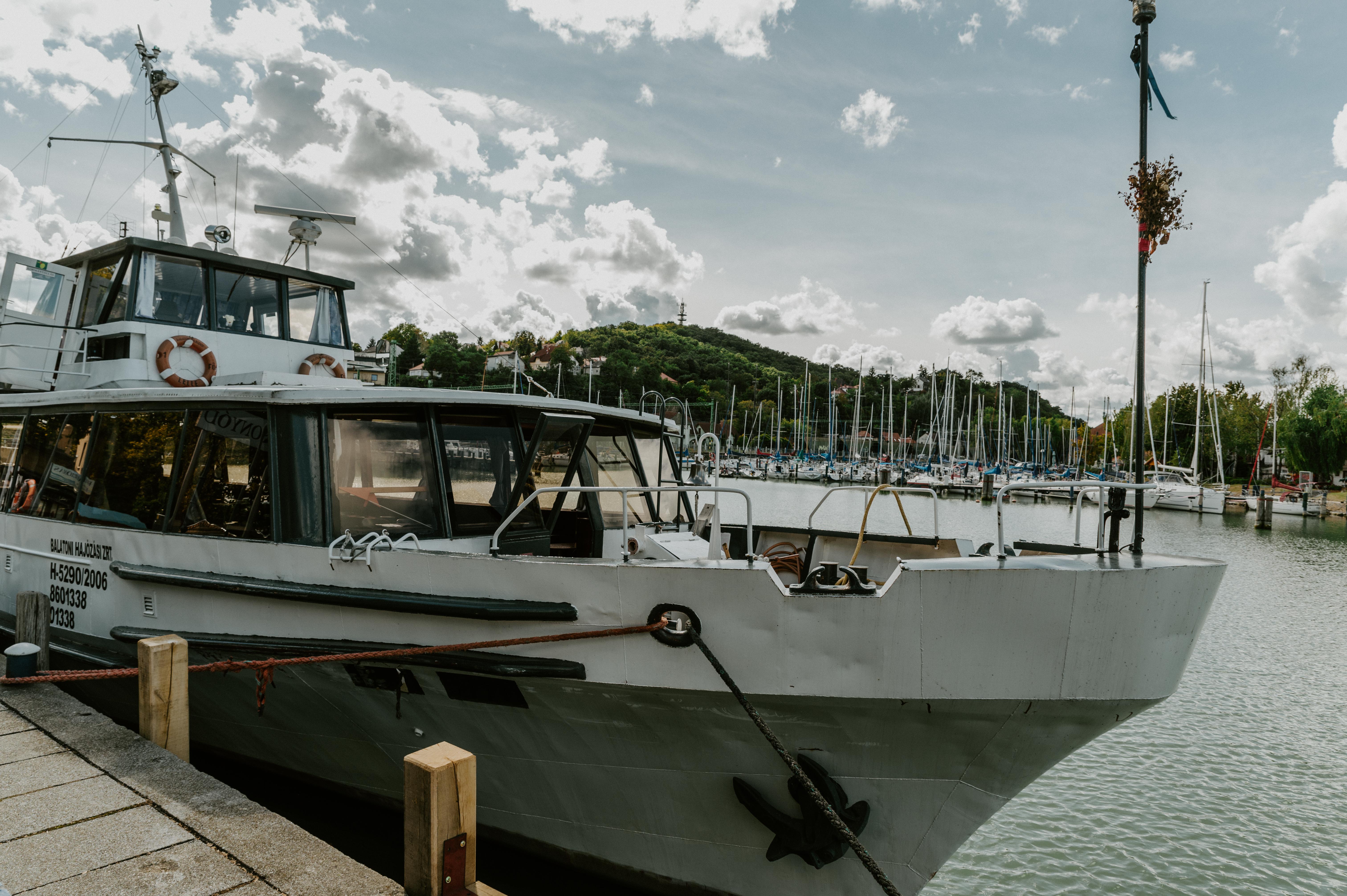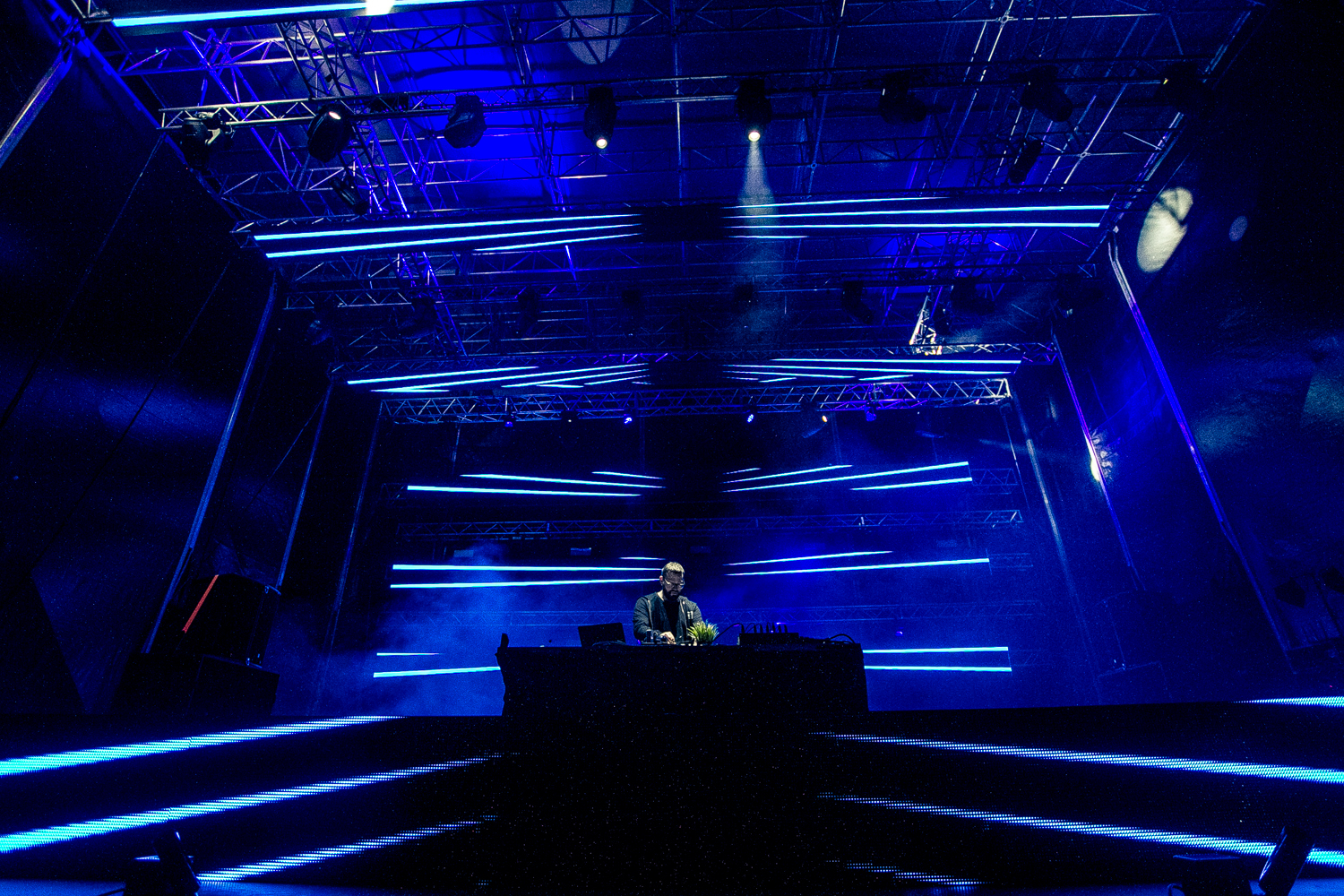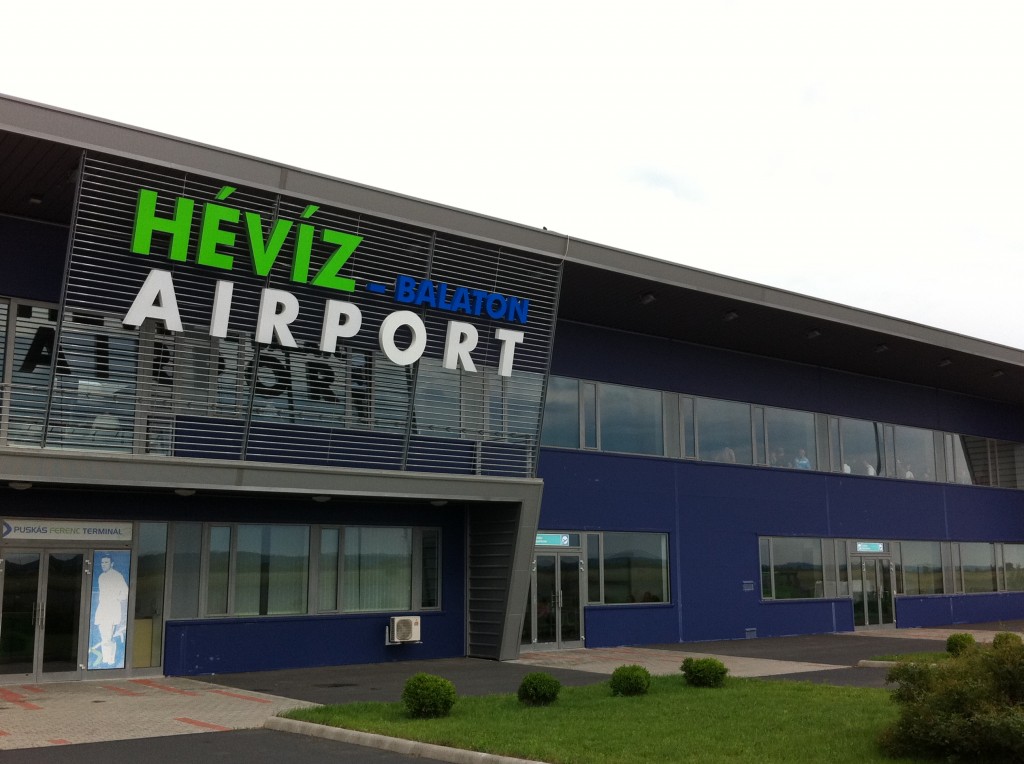Gulács can be reached from three directions (from the Káptalantóti Road, from Ludám-dűlő overlooking Badacsony, or from Nemesgulács). We chose the green blaze, which is the Nemesgulács route, and our starting point was the Saint Anthony of Padua Church which was built in the 18th century (and rebuilt in the 19th century). The country’s first Mindszenty-memorial was built in the churchyard (honoring József Mindszenty, the Archbishop of Esztergom, who opposed fascism in Hungary), but we didn’t have the chance to see it: the local funeral home is next to the cemetery and they were getting ready for a funeral when we were there. We didn’t want to disturb the slowly gathering grieving crowds.

The 700 meters long Templomcsapás Street leads towards Gulács without doubt: the hill can be seen with its regular cone towering at the end of the street.
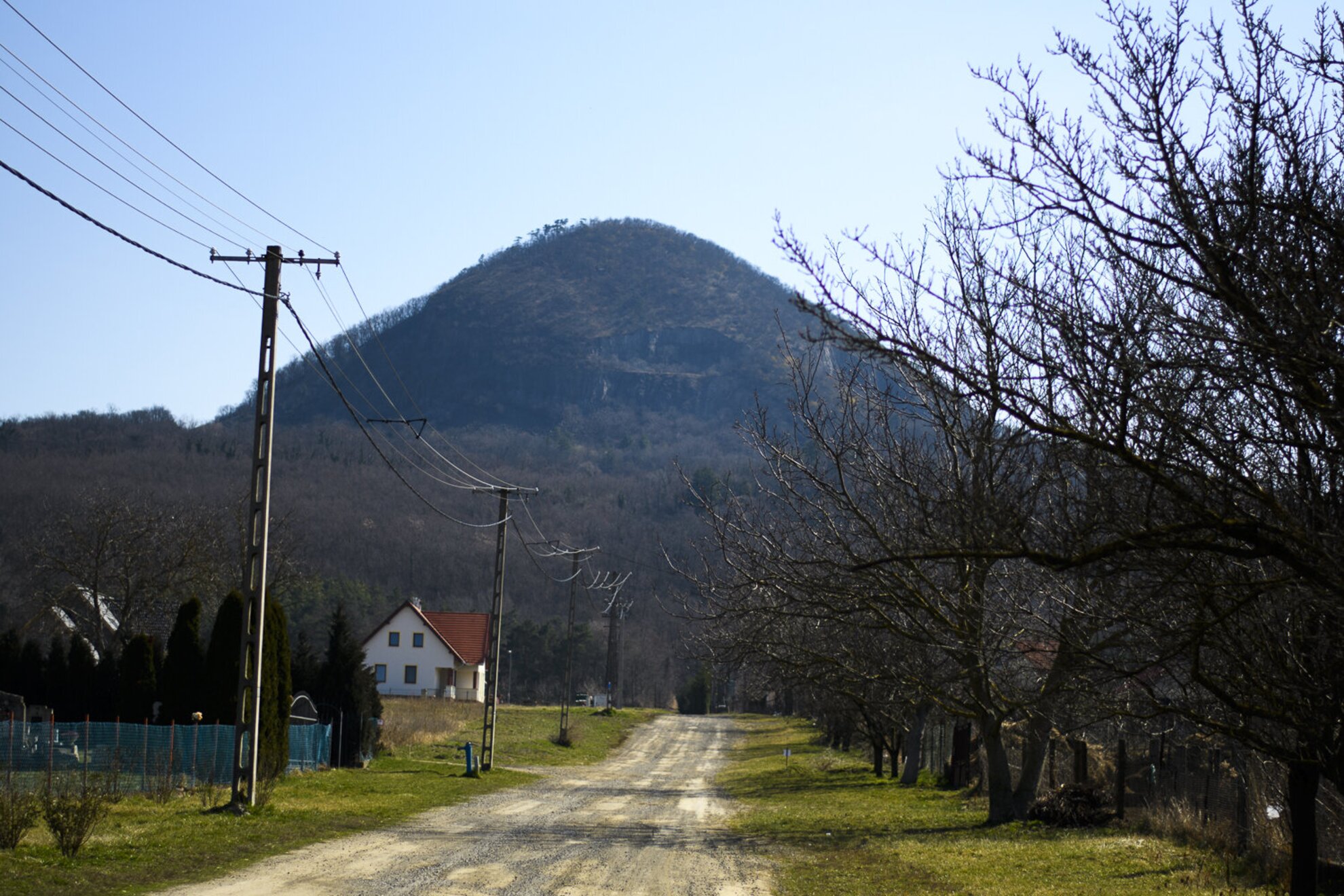
The fact that there aren’t any more houses around and that our way leads along a fenced pasture for horses and cattle on our left, both help to set the mood. The meadow is sort of huge enclosure, where cows and mares get on peacefully. It seems weird that we see many pinto horses – often called Indian horses – which adds a touch of the Wild West to this tour.
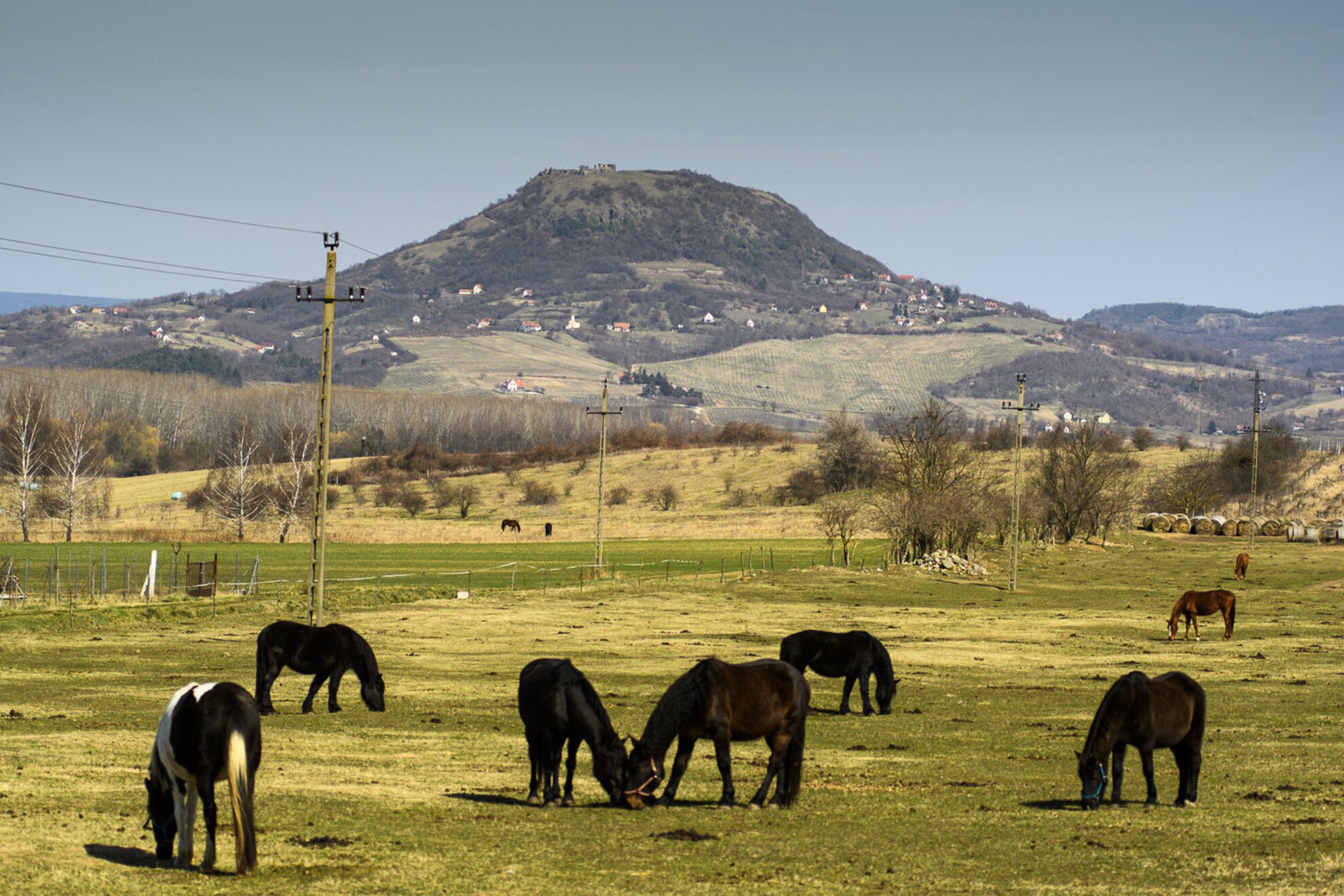
Leaving the horses behind, we arrive to the first split in the road: the path on the right leads to the old quarry, while the one on the left will take us to the hilltop. There’re signs to indicate this, but one has to be observant to spot them, as they are a bit further away from the road, hidden in the shade of trees. Our first stop is Sér Well (“Sér-kút” in Hungarian), which, in its current state, reminds more of a sewage pipe than a well. It’s only an iron pipe with a sign saying that the forest can only be visited at your own risk. However, the pipe is misleading: the real spring is a bit up from there, about ten meters away, and that one looks like one, too. There’s a small, low cellar above the spring. The water flows from the above mentioned pipe; the spring itself is dry at the moment.

We don’t really have to climb here; long, gentle slopes and steep ascents will alternate during this tour. They forgot to paint the green blaze on the trees every now and then, which might cause some problems as there’re various paths crossing ours – they start from nowhere, and lead to nowhere. These are 10-15 meters long detours, but they might annoy those who aren’t into getting lost in the woods.

Wandering in the woods, we become time travelers: fallen, overgrown trees, hanging vines, occasional huge trunks to climb over so that we can move on the path – it’s almost like the forest never saw a forester. The warning on the pipe starts to make sense.

The thick, often impenetrable forest gives us the notion that we’re explorers. I’m searching for the source of Nile as David Livingstone, with my partner, Richard Burton. Instead of the Wild West, we are searching through Eastern and Central Africa now, the white spots on the map, spots that haven’t been described by man – yet. We enthusiastically pick up the pace through this abandoned and wild land.

Try to imagine what the forest will look like in 1-1.5 months: we won’t see far due to the fresh leaves and there’ll an orchestra of birdsong and insect-buzzing. The entire place will be even more mysterious. When we were there, all we saw were snowdrops and buds all around.

The path makes a semicircle on the hillside of Gulács, and even though we are about a 100 meters higher then we were in the beginning, we still can’t find a spot to see through the trees – for now. We are probably on the side of Káptalantóti Road: we discover the remains of a building here, maybe once it was the tool shed of quarry workers or foresters. Throughout the entire tour, this is the only thing that reminds us that others have been here in this wilderness.
Ahead there’s another climb, but now the forest grows thinner, and you can spot the basalt of Gulács at certain places. After a steep slope, the surroundings suddenly change: the dirt road is replaced by decaying basalt stones. Since we are climbing uphill, we have to watch our steps. We are back on the path again after about 20-25 meters.

The Országos Kéktúra (OKT - Countrywide Blue Tour in Hungary) joins to our path here: the blue triangle will lead us up to the top from here. The sparser forest and the bare basalt is an ideal habitat for lizards. Maybe not hundreds, but dozens of lizards run away hearing our footsteps.

Basalt organs reach up to the sky on our right. No, these aren’t the same basalt organs, as these are smaller, not that regular, but just as amazing ones.
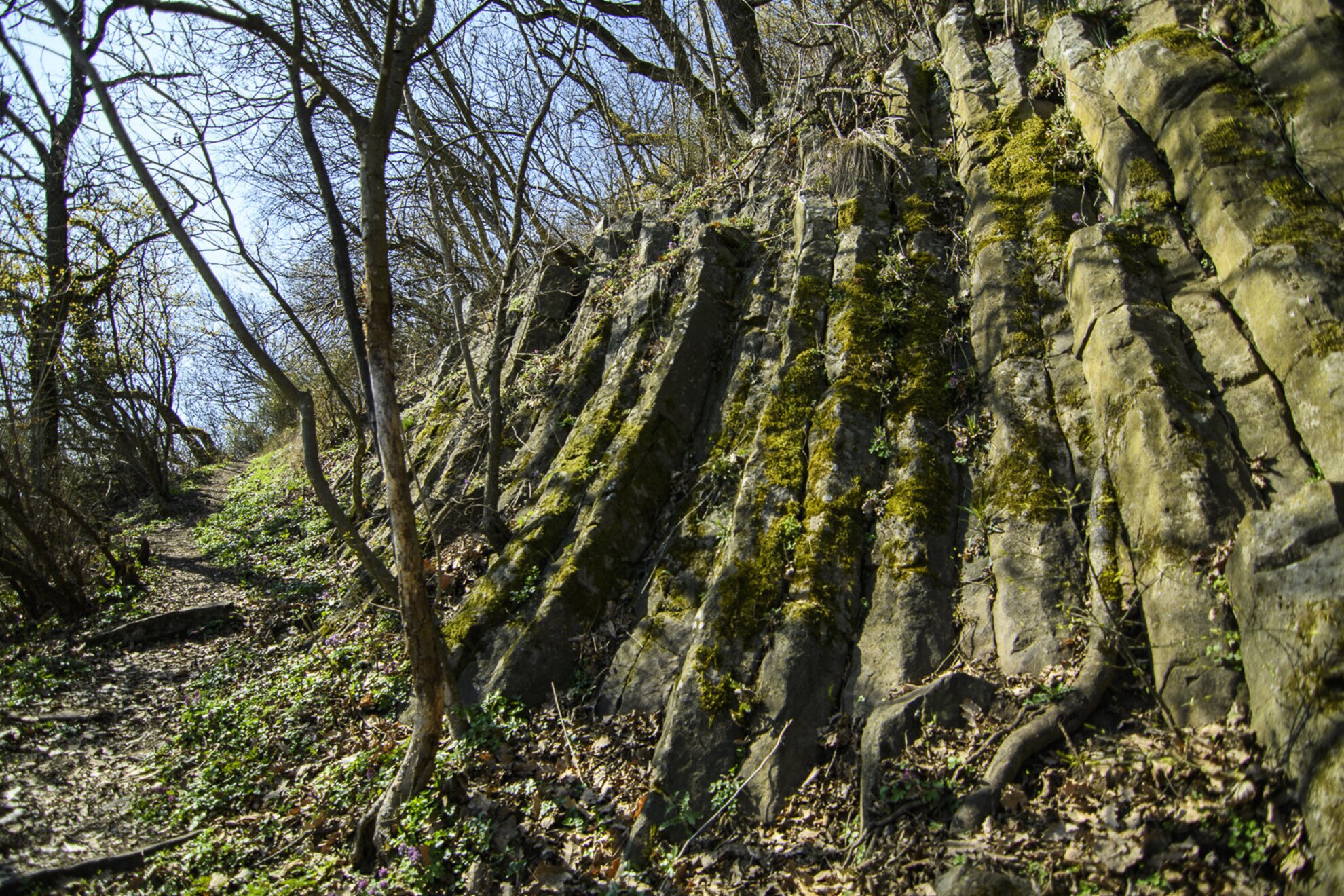
To the left we can see the first observation point: just over Badacsony, we can spot Lake Balaton. Even though the sun shines brilliantly, it still isn’t too hot: this weather is ideal for excursions. After enjoying this first wonderful view, we climb higher, even though the road here isn’t steep. Meanwhile, the path goes around in a semicircle through the hillside: observation point follows observation point.

As we follow the bends, we always see a different view from the path: the picture of Lake Balaton slowly fades into the background, while Badacsony and Szent György-hegy (Szent György Hill in English) take over its place.
As we reach the pike, the lakeside part of Tapolcai Basin lays ahead us and we can clearly see Nemesgulács. We sit down next to the concrete block that indicates the peak, feeling a little – but not really – exhausted. Although we didn’t locate Victoria Falls or the source of Nile, we did learn something: the joy and excitement of discovery, and the wonderment of nature’s wildness. Gulács, a small, perfect hill is raw beauty itself.
